Sam and Ra, our two new besties, lean over the counter of their food truck, The Black Cat Cafe, at Hokitika Gorge on the West Coast of New Zealand’s South Island. Sam and Ra started this business three months ago, after giving up their day jobs as a butcher and welder respectively.
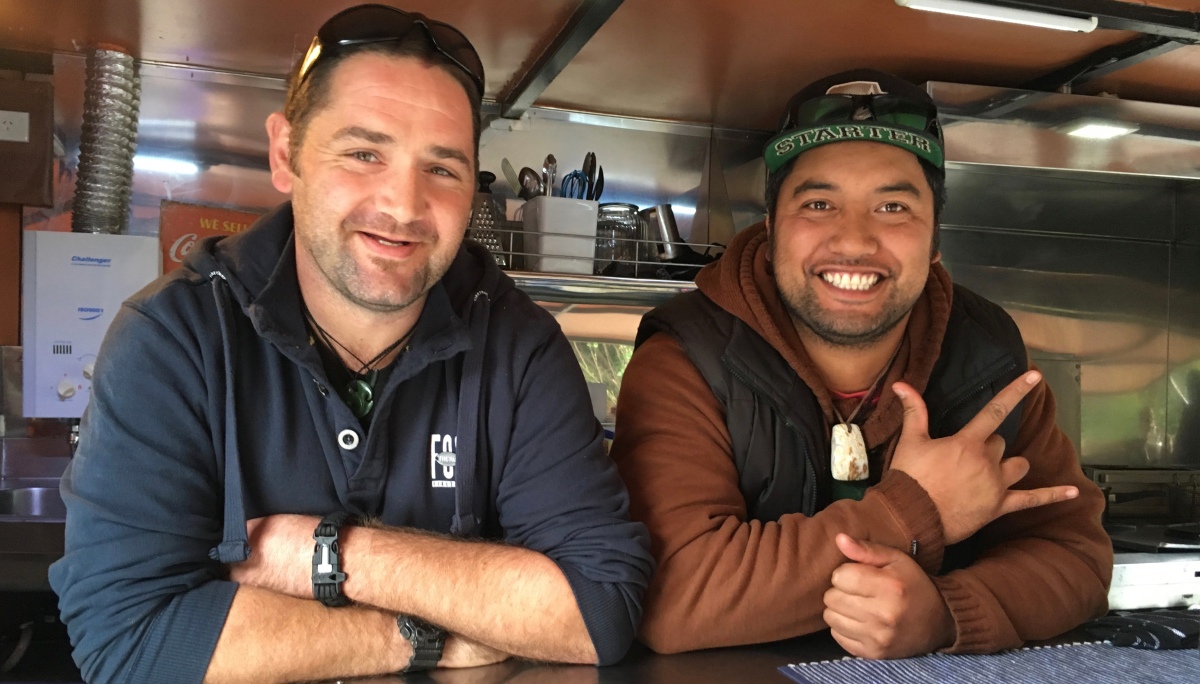
The boys were up at dawn today, fishing (if that’s the correct expression), for the whitebait from their secret location in the local river. Now we’re busy stuffing in our faces. As we wolf down their sensational fresh whitebait, we’re being serenaded by the other customers; a young guy from Vegas, strumming a Dylanesk tune on his guitar, and his two new (female) besties from Amsterdam, who look on adoringly. Lucky bloke!
 Day two of our short, sharp visit to New Zealand with Wendy and Sally, (nicknamed by some wag as The Three Skirts and a
Day two of our short, sharp visit to New Zealand with Wendy and Sally, (nicknamed by some wag as The Three Skirts and a Dick Bloke Tour), saw us drive south from our base at Greymouth and lurk furtively around the small centre of Hokitika, enjoying a coffee in the cafe attached to the local cinema. A couple of possum/merino based purchases helps support Hokitika, which bills itself as The Cool Little Town. It’s cool alright. Although it’s barely Autumn, the temperature hasn’t risen above 13 degrees. We flew in yesterday, our Emirates flight dropping down over the snow-covered tips of the southern alps, with the final approach across the Canterbury Plains showcasing the patchwork beauty of the food basket of this country.
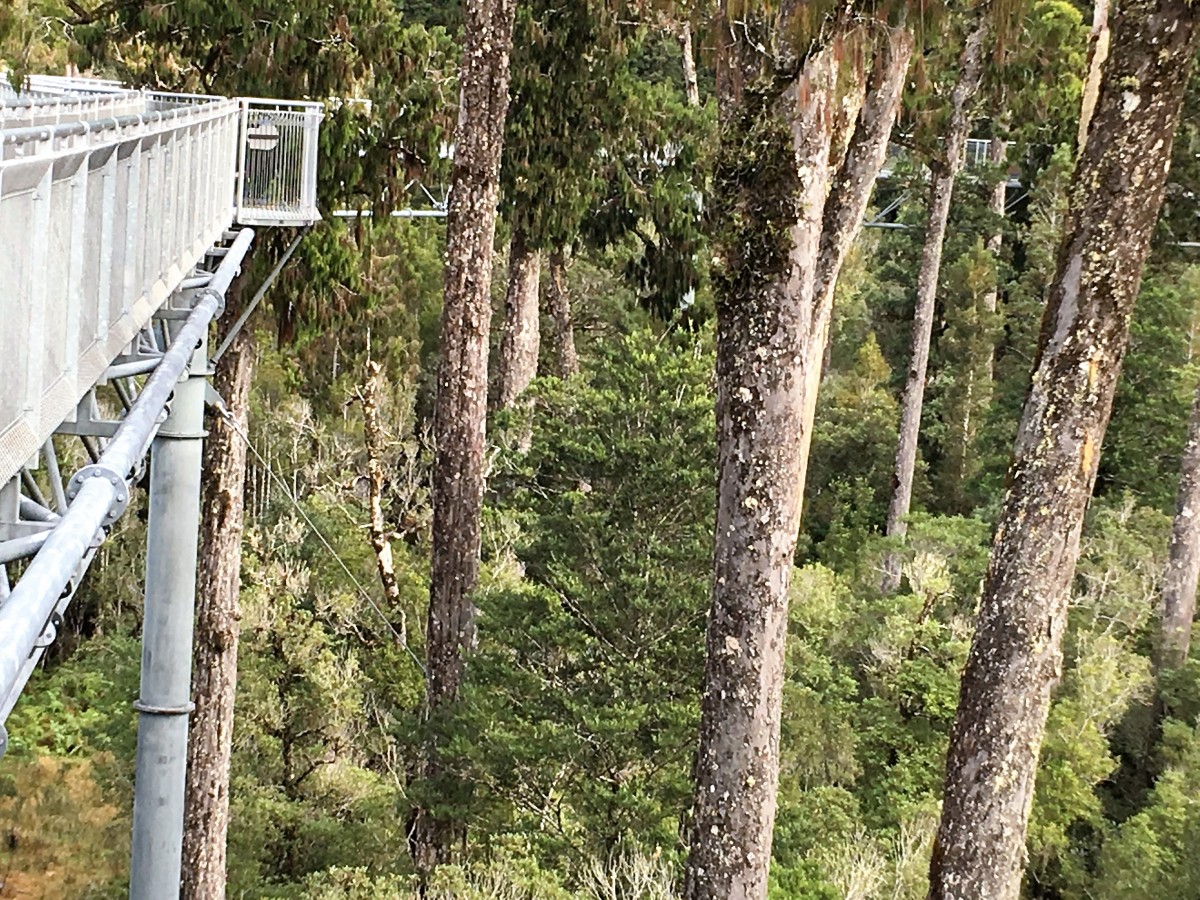 Prior to our restorative stop at the Gorge, the skirts hiked the Treetop Walk in the forest. They reported that from 20 metres high on this feat of modern engineering, the views through the emerging canopy to the mountains and lakes that surround the town were magnificent. However, 20 metres is 65 feet in old money and is a little outside my comfort zone, so I used the “resting the knee” excuse to support the attached café.
Prior to our restorative stop at the Gorge, the skirts hiked the Treetop Walk in the forest. They reported that from 20 metres high on this feat of modern engineering, the views through the emerging canopy to the mountains and lakes that surround the town were magnificent. However, 20 metres is 65 feet in old money and is a little outside my comfort zone, so I used the “resting the knee” excuse to support the attached café.
Overnight, New Zealand turned on the weather, with our little motel lashed with driving wind and rain which gives Greymouth one of the highest rainfalls in the country. But the morning dawned brightly, and heading up the coast we stopped at Punakaiki where the geological formations have resulted in a other-worldly collection of pancake rocks and blowholes.
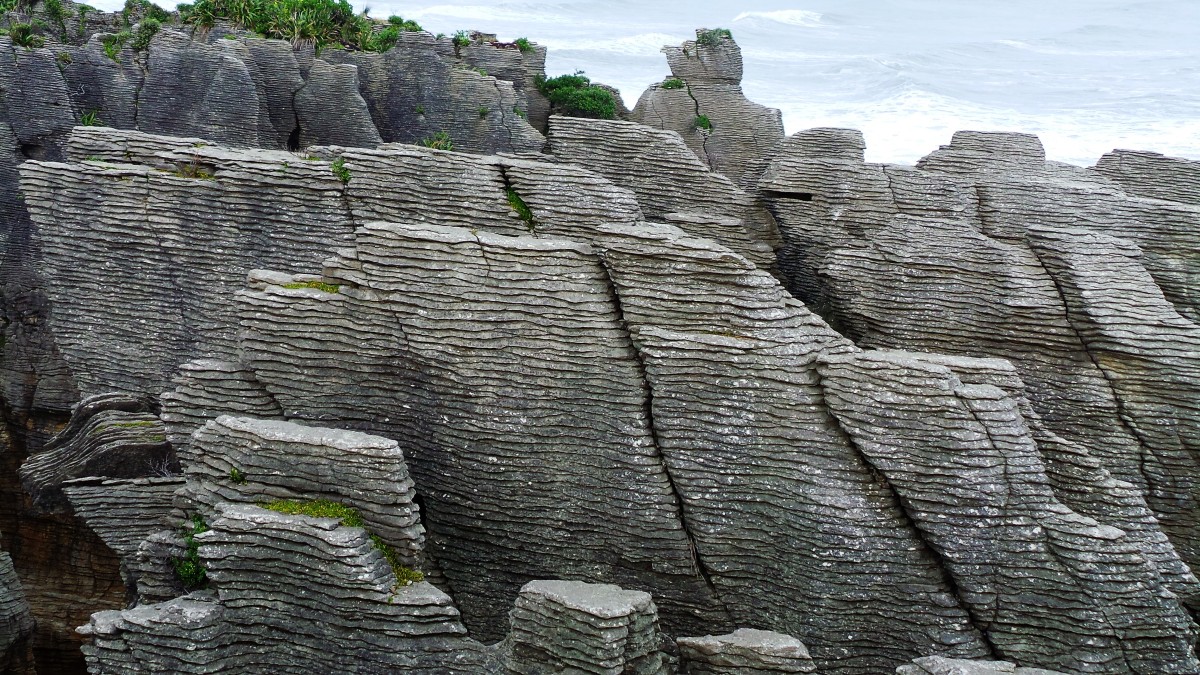
An overnight stay at Westport introduces us to a town fighting for its life. Over the last five years, a string of job losses, in the mining, health care and even fish food industry have gutted the town. We do our best to support it with a late lunch in one of the many cafes. Then with New Zealand’s first serious winter storm of the season crackling off the coast, we check into our motel just as the icy rain hits and agree a “book afternoon” would be a useful thing. I’m reading Paula Hawkins Into the Water, her second book after Girl on a Train.
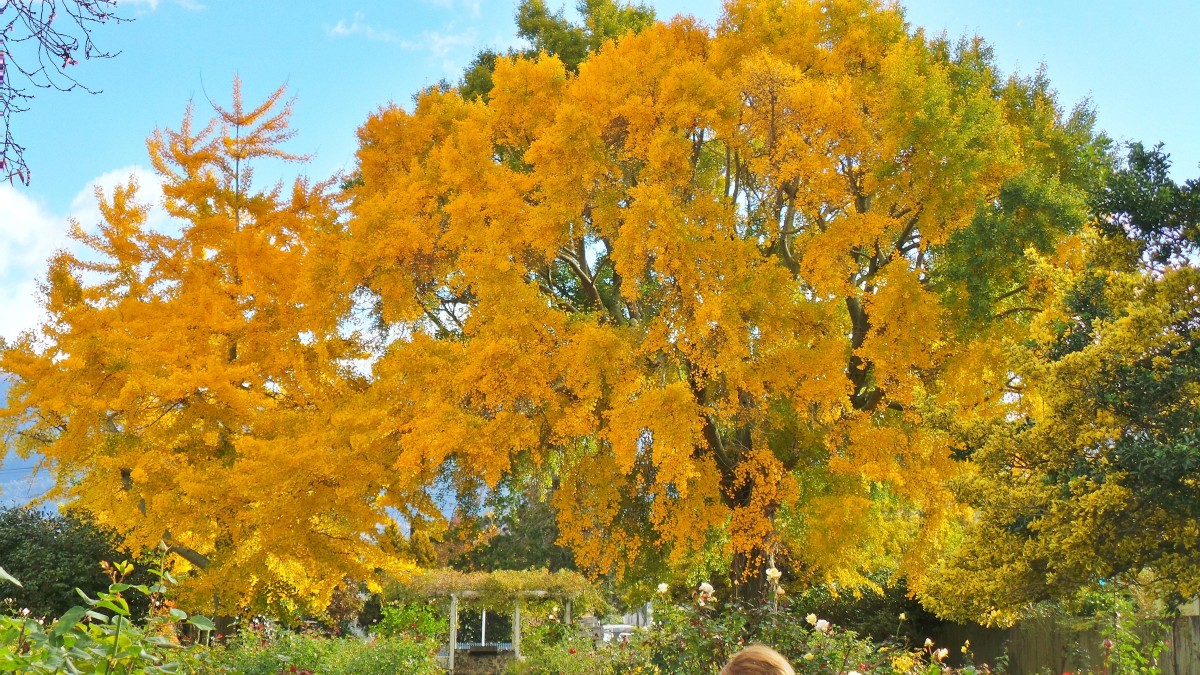
As we drive through the Buller Gorge next morning, twisting and turning on the narrow road, the sky has again cleared and we marvel at the colours of the New Zealand autumn. Russets, ochre’s and golden leaves still hang from the tress, and the roadway is awash in a carpet of brightly covered leaves. We stop in the small town of Murchison for refreshments and discover the Sweet Dreams French Bakery. With Hans from Amsterdam behind the counter, and Yvette from Paris in the back room, we wonder how this pair found their way to darkest New Zealand. We buy coffee and pastry and ask for a plate and knife, so that we can share. Hans explains that as the café has no toilet, they are not permitted to serve food on plates. He doesn’t explain why. It’s just a New Zealand rule.
Our next stop is in Motueka, on the home stretch for Wendy, and we honour my ancestors with a stop at the local rose garden. A smattering of roses have survived the autumn but the garden is dominated by a huge Ginko Biloba whose golden falling leaves carpet the garden.
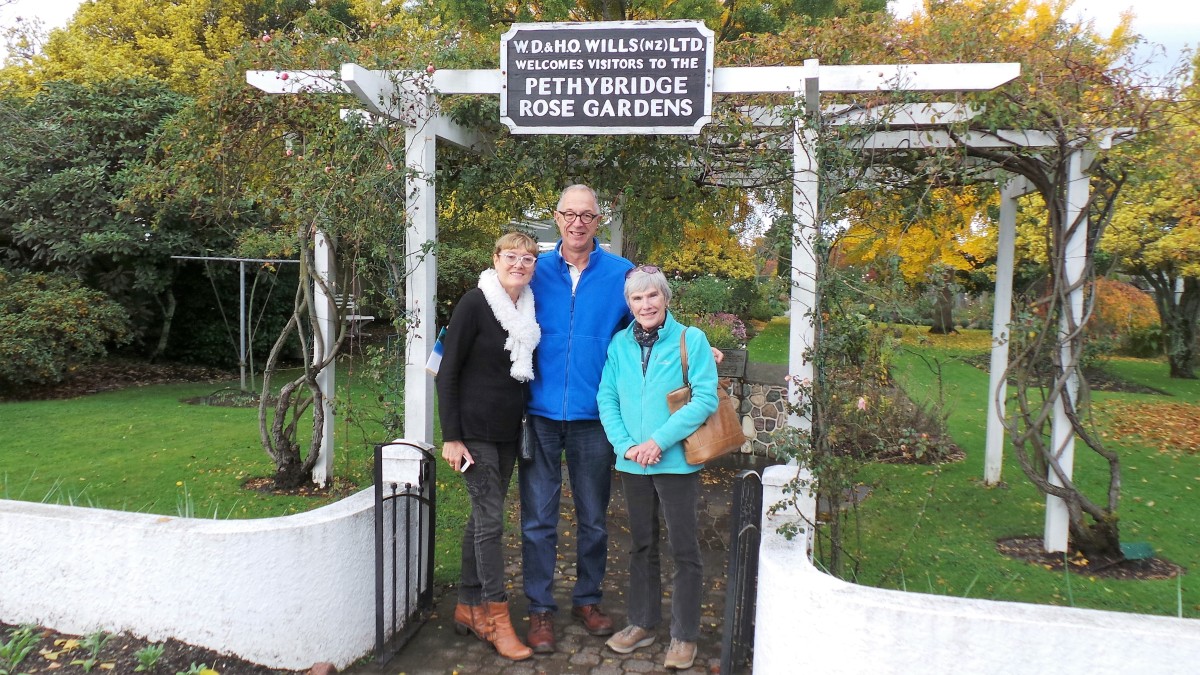
Charles Pethybridge was my grandmother’s brother, and he brought employment and prosperity to Motueka. As I was growing up with my grandmother, I well remember Charles’ visits; a small, dapper man who always arrived with a large block of chocolate to pacify his sister’s unruly grandsons.
A day in Wendy’s home town of Nelson takes us first to the Settlers’ Memorial on the waterfront. Nelson was first settled in 1841 when three colony ships from England arrived. The memorial is inscribed with the passenger lists from each of these ships, and from the settlers ships that followed. The initial ships contained only men, (vocations are listed), while the latter has families and some very young children. Sadly, there is a high attrition rate among these later ships which makes us question these brave souls that set off from Southampton for a land, far, far away. But it’s absolutely freezing, there’s a stiff breeze blowing and with tears in our eyes we repair to the café at the WOW Museum.

This museum, which is home to the costumes from the annual Wearable Arts Festival in Wellington really puts the WOW into WOW!. Apart from the galleries, there’s a theatre showcasing last year’s awards, and for the bloke who might become a little restless with too many frocks; there’s a world-class exhibition of classic cars.
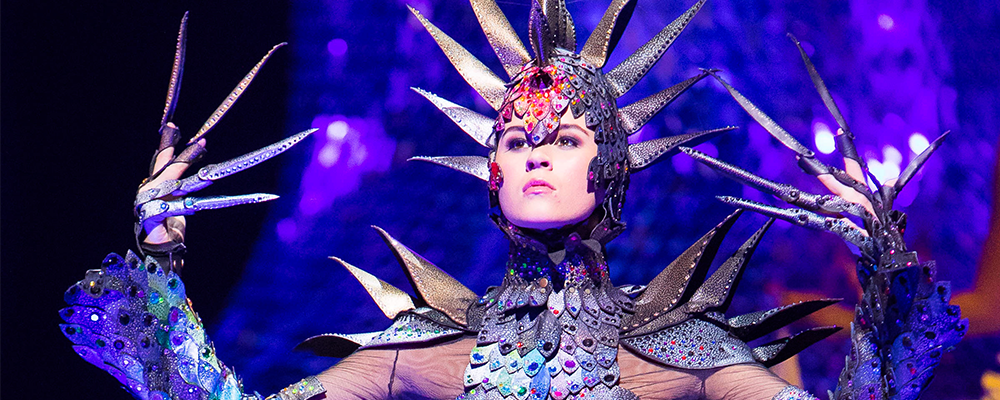
We hug Wendy farewell, and drive through the early dawn to catch the Interislander ferry to Wellington. This winter storm is causing issues for us, and the ferry company have warned us by text that delays and cancellations are likely. We sail on time, and as the ferry leaves the shelter of the sounds and enters Cook Strait, the staff warn of 3-4 metre swells and hand out ice cubes (to reduce nausea) and sickbags. Sally looks slightly nervous, but Maggie and I have made this trip many times as kids, and we celebrate our lack of queasiness with a pie and chips. Our trip is uneventful, (apart from a view bumps), but the rising seas caused by that winter storm ensure that all sailings are cancelled for the next two days as the swell peaks at 9.5 metres.
At Wellington we hug Sally farewell. The stiff southerly wind and icy blast at Wellington railway station again questions our willingness to travel “out-of-season”. But armed with a good hot coffee, we become true tourists, taking the Kiwirail Northern Explorer train to Auckland.
![NorthernExplorer-WindingThroughTheMeadows-JMB3[1]](https://derekdrydenblog.files.wordpress.com/2017/05/northernexplorer-windingthroughthemeadows-jmb31.jpg?w=1200)
Although this trip consumes the whole day, it’s an excellent experience. The cars of the train are built to maximise the gorgeous scenery, with large high windows and an open observation car on the rear. There’s a semi-continuous commentary, and before we’ve passed through two tunnels I’ve learned more about New Zealand’s history than I ever knew. A buffet car supplies food and drink and from the observation car we gaze down on the Mangaweka Gorge.
 Around lunchtime we start to climb up onto the Central Plateau, and that winter storm we first encountered in Westport has delivered a fresh dump of snow. Sheep shiver in the icy air as they try to find the grass that nature has buried under the snow. We pass Waiuru, at 814 metres above sea level, the highest point on the main trunk line. The train manager tells us that when they came south yesterday it was snowing quite heavily in this area and the pines along the track are still weighed down with the icy fingers of winter. In the distance the snow-covered dome of Mount Tongariro sparkles in the sun.
Around lunchtime we start to climb up onto the Central Plateau, and that winter storm we first encountered in Westport has delivered a fresh dump of snow. Sheep shiver in the icy air as they try to find the grass that nature has buried under the snow. We pass Waiuru, at 814 metres above sea level, the highest point on the main trunk line. The train manager tells us that when they came south yesterday it was snowing quite heavily in this area and the pines along the track are still weighed down with the icy fingers of winter. In the distance the snow-covered dome of Mount Tongariro sparkles in the sun.
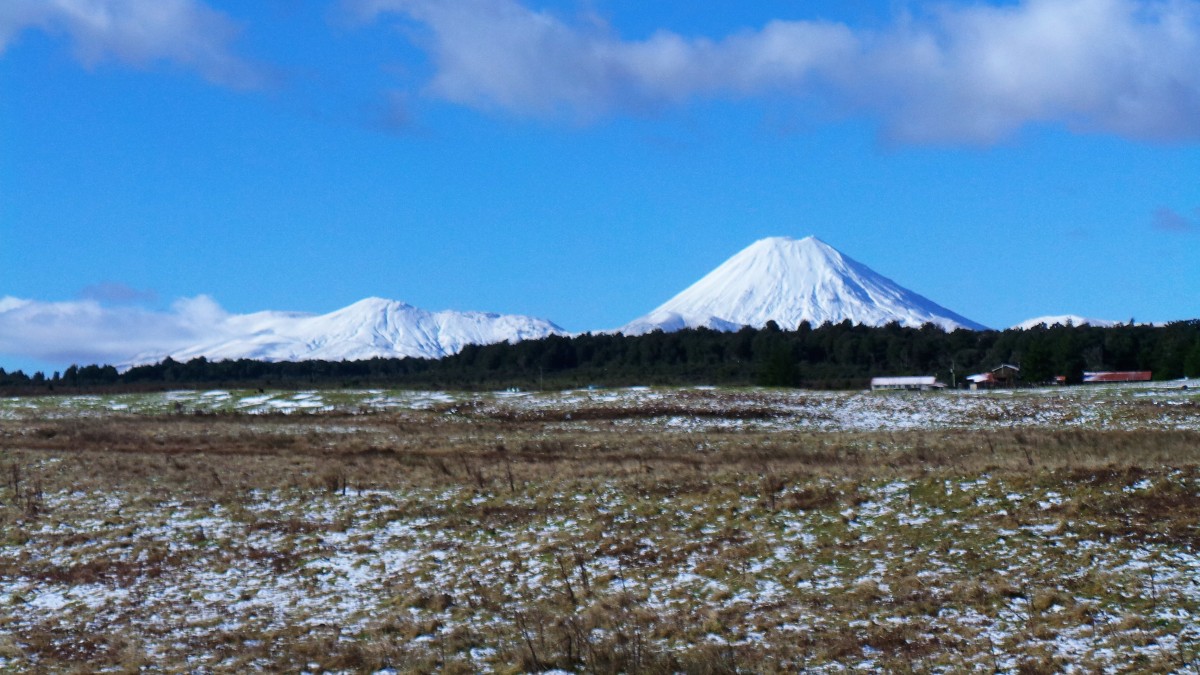
The Northern Explorer justifiably earns its place as one of the great railway journeys of the world.
To close, a note about our very dear friend Wendy who left Sydney five years ago to live in Nelson. I promised Wendy that this post would not be all about her, but she has lived such a remarkable life I can’t close without a couple of observations, and when you sit a gal down with a bottle of the Famous Grouse in front of her, the stories just come tumbling out.
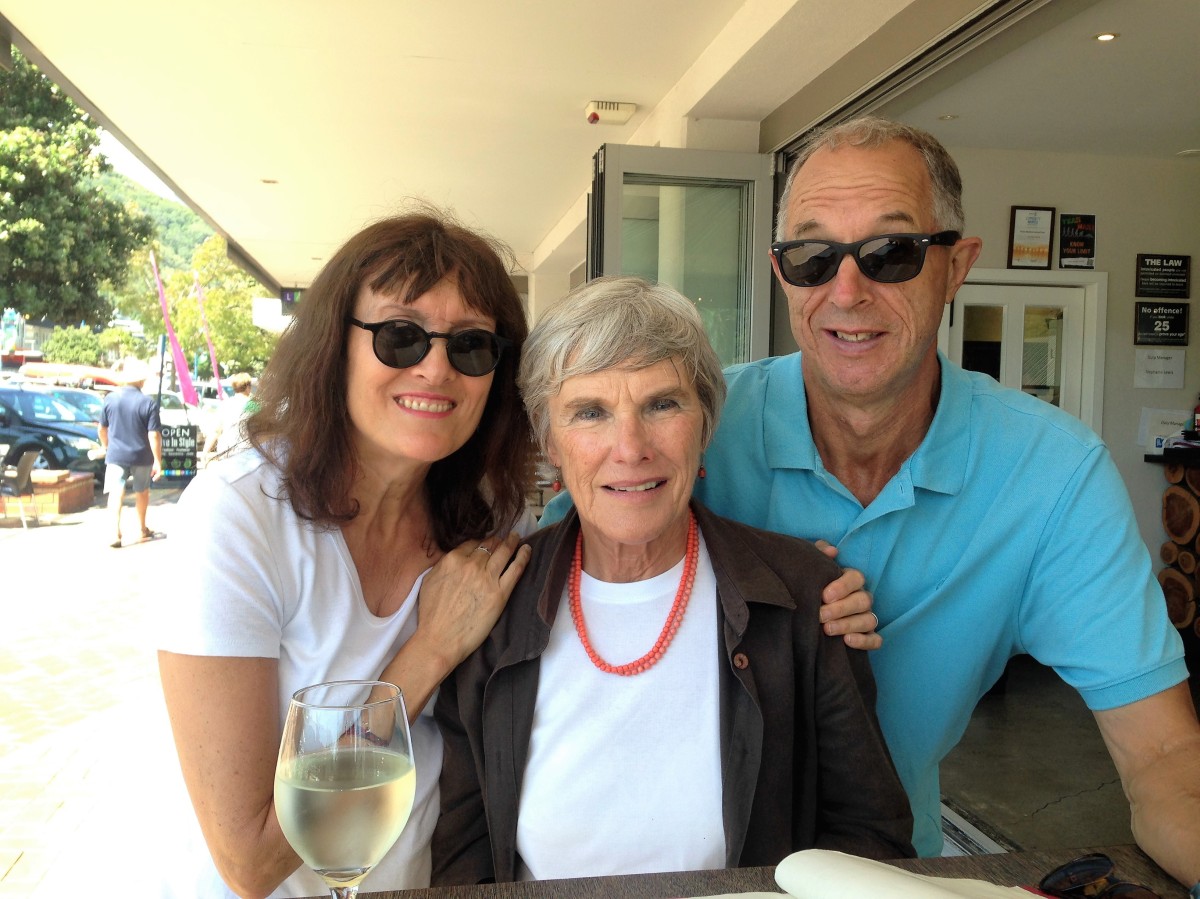
Wendy was born in Chengdu in China in 1939, where her English father was an executive with the Hong Kong Shanghai Bank. When she was three the confluence of WW2 and the Japanese Sino war caught up with Wendy and her parents, and they were initially placed under house arrest in the San Wah Hotel in Wanchai. After Wendy’s sister was born in 1942 they were interned in Camp Stanley which had been St Stephens School on Stanley Peninsula. Wendy recalls that when they were placed in the camp, her mother gave her a small bag to carry, assuming that a three-year-old was unlikely to be searched by the guards. In the bag was a gaggle of ducklings, which her mother kept hidden during the three and a half years of their interment, but which sustained them with daily eggs. During this time, her father was sentenced to 10 years’ hard labour as a war criminal and did not come back until the end of the war on a stretcher, jaundiced and in a yellow shirt! Not a pretty sight, remarked Wendy.
After the war, and with her father ill and emancipated, the family was repatriated to Britain, but after a short period of recuperation, Wendy, found herself back in China, initially in Hong Kong which must have been hugely traumatic. The family lived in Shanghai from September 1946 to June 1947 then went up to Chungking via the Yangtze River in a sampan and lived there from June 1947 to September 1948
By the time her father was assigned to the bank in Borneo, Wendy, now aged 12, was ready to begin her secondary schooling and was sent to the Nga Tawa Diocesan School near Marton in New Zealand. Wendy tells how the whole school was on tenterhooks, awaiting the arrival on Boxing Day 1951, of this girl from Borneo, and were most disappointed when she turned out to be white and English-speaking. Definitely not the little fuzzy-wuzzy girl they were expecting. Her father’s position with the HSBC meant that Wendy, and later her younger sister would be flown back to Borneo once a year, to spend the holidays with her parents. For Wendy, barely a teenager, this meant boarding a Sunderland flying boat in Wellington to Rose Bay in Sydney where she overnighted.
Next day the flying boat went onto Darwin, occasionally stopping at Cloncurry if the weather was inclement. Then after a night in Darwin it was onto Singapore where she again overnighted before flying onto Borneo in a conventional aircraft. Probably a DC3. It was on one these overnight stops in Singapore, when, billeted at Raffles, Wendy peeked through curtains into the bar, and witnessed Ava Gardner entertaining the guests from the stage.
Growing up in China saw Wendy and her mother held at gunpoint by Chiang Kai-shek fighters and later she witnessed the rise in the hills of China of the young upstart Mao Zedong.
Personally, I think this remarkable life of hers should be celebrated and someone should record it. But if I’ve misrepresented any of this, after all, I was clinging to the Bombay Sapphire while Wendy strangled the Grouse, I know she will click reply below and correct me.

What a wonderful account of Wendy and her life.
Im thrilled that the appalling South Island weather didn’t tame you and your three gorgeous fellow travellors. So lovely to see the photos.
LikeLike
Pleased to hear you are embarking on more tours.
No need to say have a blast to you two!
From Corsica with love
K & A
Sent from my iPad
LikeLike
Wendy corrected me as follows:
I was born in Hong Kong and the Sunderland flying boat flew out of Auckland’s Mechanics Bay and into Rose Bay Sydney as you said.
LikeLike
Love your writing – when will we see a book on the shelves?
LikeLike
And PS I want one of those whitebait fritters!! Oh I can taste them now.
LikeLike
Love your blog Derek. Beautiful pics of glorious country, interesting descriptions and especially love your telling of Wendy’s early life.
Really enjoy reading your travel stories.
Love
Monica
Sent from my iPad
LikeLike
Another wonderful bit of writing & photos. ! Well done Bro. although I thought Wendy looked a little angry in the last photo !
Everything flowing nicely this end
Cheers
JR
LikeLike
It was wonderful to hear about part of Wendy’s life although knowing her, it was much abbreviated. Sounds like you had a fabulous holiday if a bit cold. Thanks for sharing it all with us.
Annie W
LikeLike